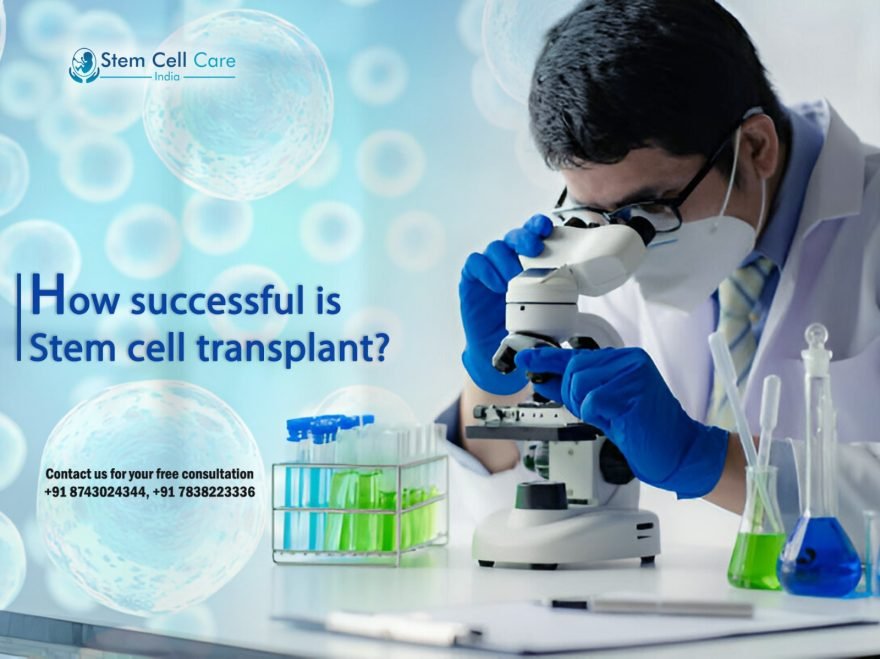Table of Contents
Within the human body, stem cells form the foundation of all tissues and organs. This promotes the replacement and repair of damaged cells and tissues by differentiating into different types of tissue and cells within the body. As a result of extensive research and study on these cells, stem cell transplants have emerged as a cutting-edge medical condition treatment, especially for cancer and blood disorders. Hematopoietic stem cell transplantation (HSCT), another name for this intricate process, is the replacement of damaged or diseased bone marrow with healthy stem cells.
Understanding the success rate and factors influencing results is important for patients and healthcare providers. If you want to undertake this stem cell transplant in India, you can visit our website, Stem Cell Care India, to book an appointment.
Understanding Stem Cell Transplants
Stem cell transplants can be differentiated into two categories, such as:
- Autologous Transplant: It involves using the patient’s own stem cells. This is generally used to treat certain types of cancer, such as lymphoma and multiple myeloma. The patient’s stem cells are gathered, treated, and then reintroduced after intensive therapy.
Success Rate
- Multiple Myeloma: Some research and studies have indicated that autologous transplants can lead to remission in approximately 50 to 60 percent of patients, with enhanced survival rates.
- Lymphoma: The success rates for Hodgkin lymphoma and non-Hodgkin lymphoma are encouraging, with many patients achieving robust remission.
- Allogeneic Transplant: This method involves using a stem cell transplant donor. This type is commonly used for conditions like leukemia, aplastic anemia, and some inherited blood disorders.
Success Rate
- Leukemia: The allogeneic transplants are only effective for certain types of leukemia. The five-year survival rate for acute myeloid leukemia (AML) patients undergoing allogeneic transplants ranges from 40 to 60 percent, depending on factors like age, disease stage, and donor match.
- Aplastic Anemia: For patients with severe aplastic anemia, the success rate of allogeneic stem cell transplant can be as high as 80 to 90 percent when a matched sibling donor is available.
The success rate of both types of stem cell transplants varies based on several factors, involving the type of transplant, the condition being treated, the patient’s overall health, and the availability of suitable donors.
Factors Influencing Better Results
- Disease Type & Stage: In early-stage diseases generally have better outcomes compared to advanced-stage conditions.
- Age & General Health: Patients in younger and healthier conditions tend to have success rates and better recovery results.
- Donor Match: stem cell transplant donors have a genetic match between donor and patient, which increases the likelihood of success and lowers the risk of complications like graft-versus-host disease (GVHD).
- Post-Transplant Care: Its effective post-transplant care, which includes monitoring for infections and managing GVHD, is important for robust success.
Complications & Risks
While stem cell transplant for leukemia and others offer significant potential for curing or managing serious diseases, they are not without risks, like:
- Infection: In some cases, the weakened immune system during and after the transplant can lead to infections.
- Graft-Versus-Host Disease(GVHD): This is a condition where the donated cell attacks the recipient’s body, which can be agonizing and life-threatening.
- Relapse: The possibility of the original disease returning, which significantly depends on the condition treated.
Advancements & Future Directions
Ongoing research and advancements in medical technology and supportive care have significantly improved the success rate and results of stem cell transplants. Keep in mind that research is ongoing to optimize conditioning regimens, improve donor matching techniques, and develop strategies to prevent and treat complications like GVHD.
Ending Note
Stem cell transplant procedures have been shown to be highly effective treatments for a wide range of blood disorders and cancers, and their success rates are also encouraging, giving hope to many patients. The kind of transplant, the patient’s condition, and the standard of post-transplant care are just a few of the many variables that affect the outcome. As studies and research continue to advance, the results and success rates of stem cell transplants in Delhi are expected to improve, further firming their role in modern medicine.


